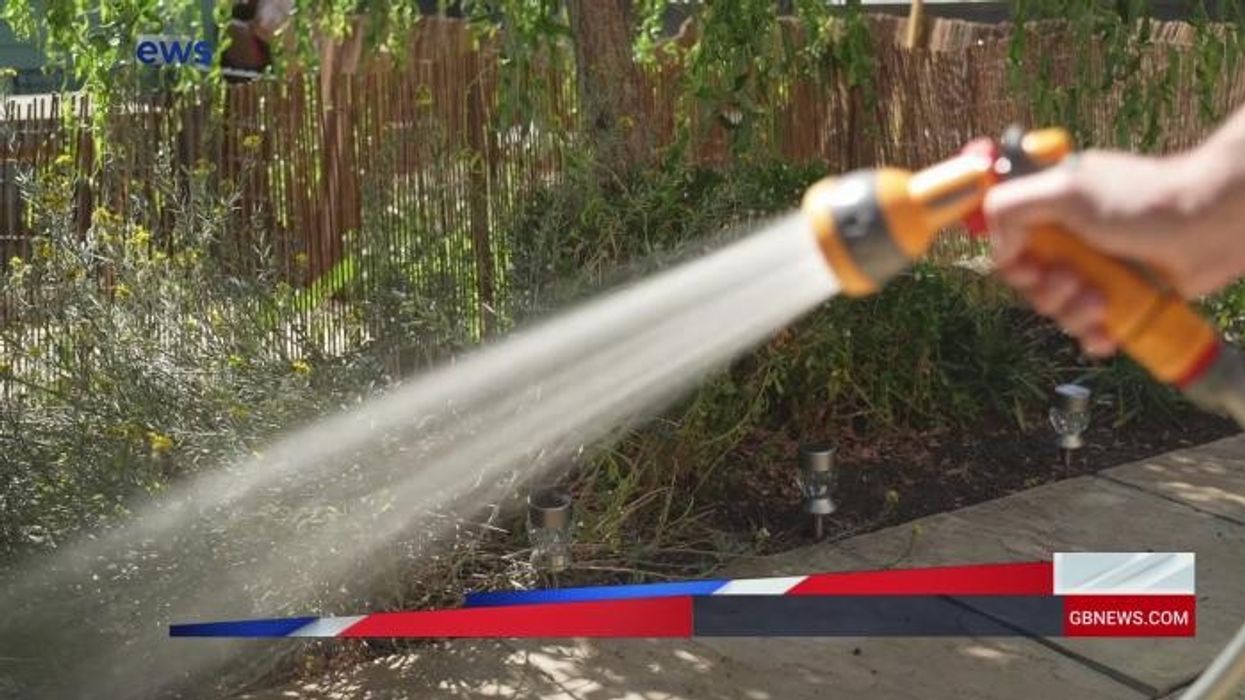More hosepipe bans to hit households as FIVE additional regions could face drought this year - Will you be affected?

Three water companies have already introduced hosepipe bans affecting millions of residents across the country
Don't Miss
Most Read
Trending on GB News
More hosepipe bans could be on the way as five additional regions may be in drought by September, the Environment Agency (EA) has warned.
Currently, three areas of the UK including Cumbria and Lancashire, Yorkshire and Greater Manchester and Merseyside and Cheshire are in drought following one of the UK's driest spring's on record.
It has prompted hosepipe bans from three water companies including Yorkshire Water, Thames Water and South East Water.
But millions more people could face these conditions across the Midlands and southern England this year, under the EA's reasonable worst cast scenario.
The EA said it will announce its expectations for more areas of England to enter “drought” status as the National Drought Group – a coalition of sector leaders and officials – meets on Tuesday, July 15.
If England gets 80 per cent of its long-term average rainfall and warm temperatures over the coming weeks, the total number of areas given “drought” status could reach eight by September, the watchdog forecasts.
In this scenario, the West Midlands, East Midlands, Thames Wessex, parts of the Solent and South Downs, parts of East Anglia and Lincolnshire and Northamptonshire could also be in drought by the end of the summer.
To prepare for and tackle the impacts, the EA said it has been working closely with water companies, which are following their drought plans to ensure supply, as well as the National Farmers’ Union and local authorities.
LATEST DEVELOPMENTS:
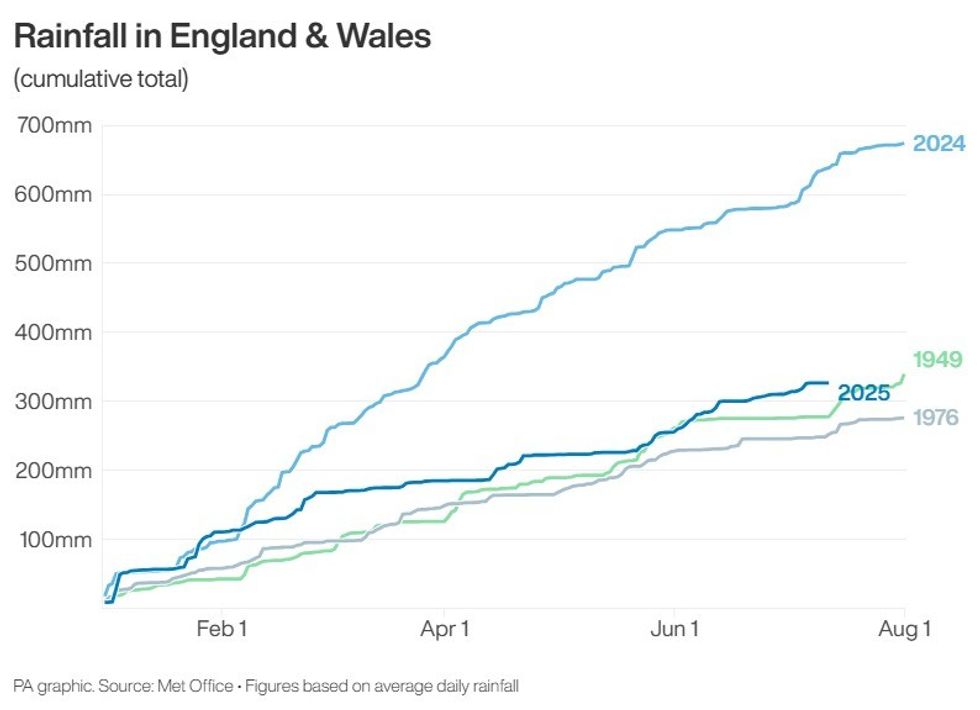
A map showing rainfall levels in England and Wales
|PA
Richard Thompson, water resources deputy director of the watchdog, said: “We certainly expect more regions to enter drought status.
“We’ll be announcing that at the National Drought group tomorrow. That could extend further, depending under a reasonable worst case scenario.
“Obviously, if we were to get average rainfall or above, it might slow down the rate in which new parts of the country enter official drought status, but we do expect more.”
Thompson said the watchdog is planning towards its reasonable worst case scenario but has also “stress tested” these preparations against some more extreme scenarios where hot and dry conditions could push even more areas into drought -and faster.
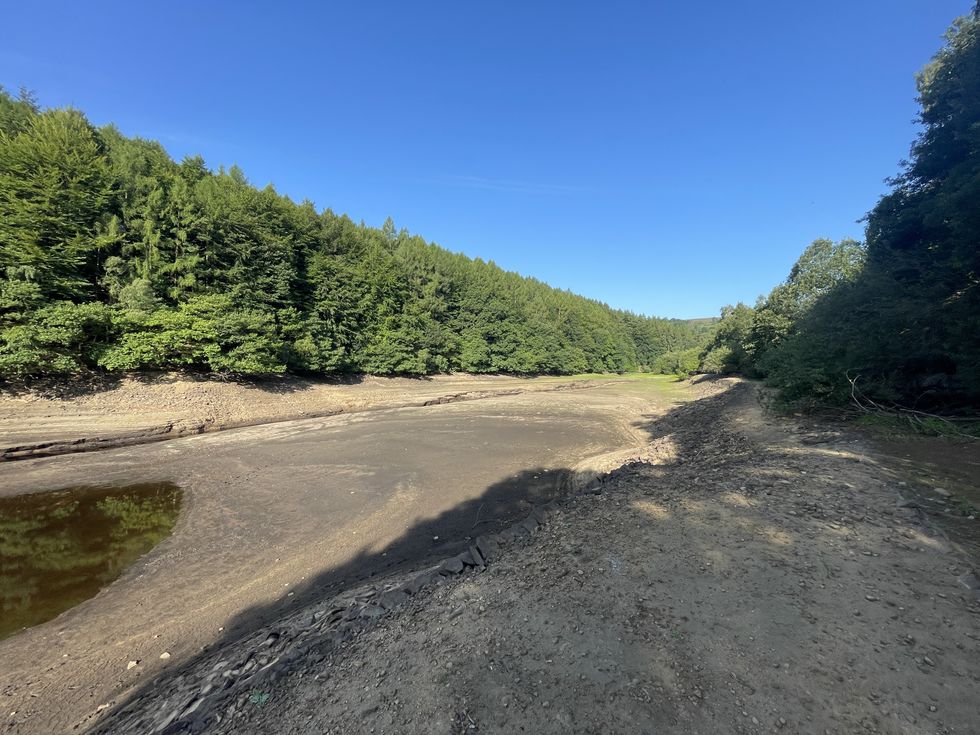
Low reservoir levels pictured at Yorkshire Water's Agden Reservoir near Sheffield
|PA
“We continue to respond to the current situation, but also to prepare for all eventualities,” he added.
Thames Water today became the latest utility to announce a hosepipe ban, which will begin next Tuesday for customers in Oxfordshire, Gloucestershire, most of Wiltshire and some parts of Berkshire.
The water company said the measure will be brought in after the EA placed its area into the “prolonged dry weather category”.
Liz Stephens, Professor of Climate Risks and Resilience at the University or Reading, said the impact from this ban could be "more profound" if the hot weather continues.
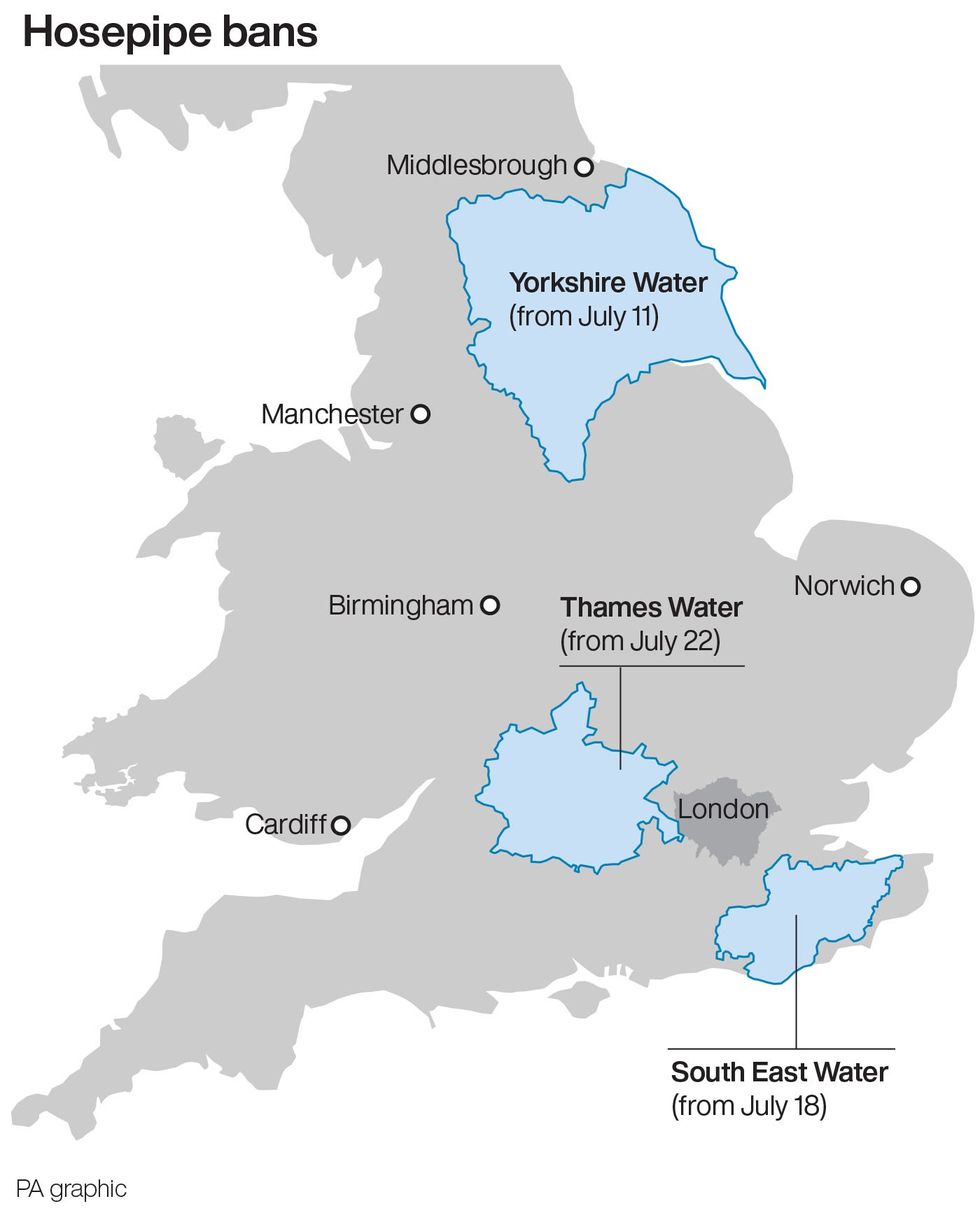
A map showing where hosepipe bans have already been introduced
|PA
"This hosepipe ban is coming into place a whole month earlier in the year than the most recent hosepipe ban in 2022 and as a result the impact on individuals may be more profound, especially if we experience further heat waves during the rest of the summer, Professor Stephens explained.
"The UK has been experiencing drier-than-average conditions since January and while this low rainfall might not be as severe as in 1976, the increased population puts more demand on water resources and therefore water restrictions at this time are a sensible precaution."
Dr Jess Neumann, associate professor of hydrology at the university, said individual actions "add up" and advised people take steps including turning of the taps when brushing their teeth and taking shorter showers to reduce water use.
The EA said it expects to see other water companies follow with their own hosepipe bans as they stick to their drought plans, although this will also be dependent on the rainfall and temperatures in the coming weeks.

Hosepipe bans have already been introduced by three water companies across the country, affecting millions of residents
|PA
Stuart Sampson, drought manager at the EA, said the situation for farmers has been “deteriorating” with already low levels in irrigation reservoirs prompting concerns for the rest of the summer.
Some farmers have been reporting poor crop quality as well as lower yields on livestock, while fears are growing over the impact that conditions could have on winter feed.
Anger is growing among farmers in East Anglia, who face an abstraction ban preventing them from irrigating crops due to low river levels, while a hosepipe ban has not been put in place.
The EA said it has carried out fish rescues as the higher temperatures cause fish die-offs, as well as blue-green algae blooms in waterways, which can be harmful to ecosystems, pets and people using the water.
Meanwhile, canal and river trusts have reported restrictions and closures, caused by the low levels in reservoirs that supply the networks.
“These are in a worse position than in any other droughts over the past 20 years,” Sampson said.
While the EA is planning for its reasonable worst case scenario, Will Lang, chief meteorologist at the Met Office said July is likely to see more changeable weather, with sporadic rainfall and some hot spells.
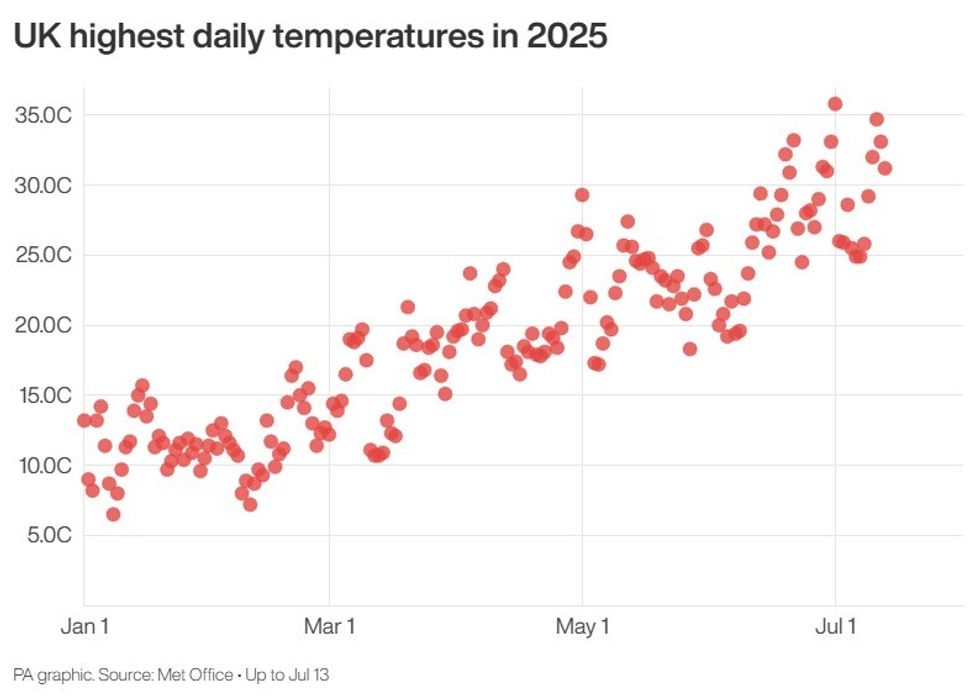
A map shows the UK's highest daily temperatures in 2025
|PA
And for the longer-term outlook, Lang said there is “no strong signal” for it being very dry or extremely wet.
“It could go either way, but the most likely situation is that we will have somewhere near average rainfall for the UK and also for England and Wales as a whole,” the weather expert explained.
On wildfires, Thompson said the EA is aware reports have been increasing and is working closely with local authorities to ensure emergency services are ready to respond.
“We haven’t had any widespread reports so far,” he said, but added that the south and east of the country are more likely to see wildfires if more are to happen.
More From GB News


